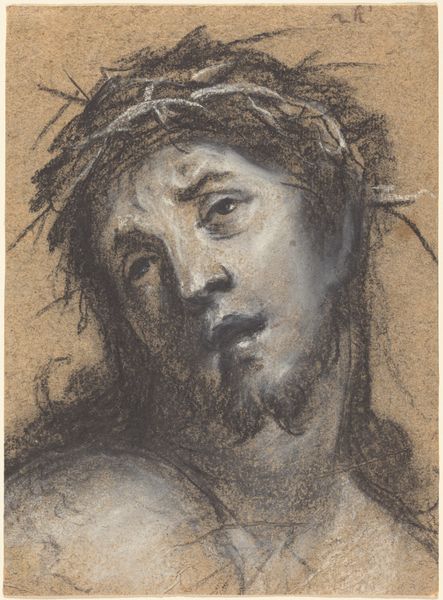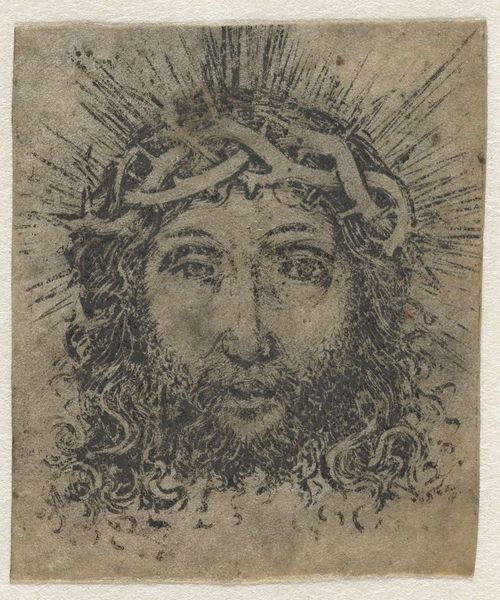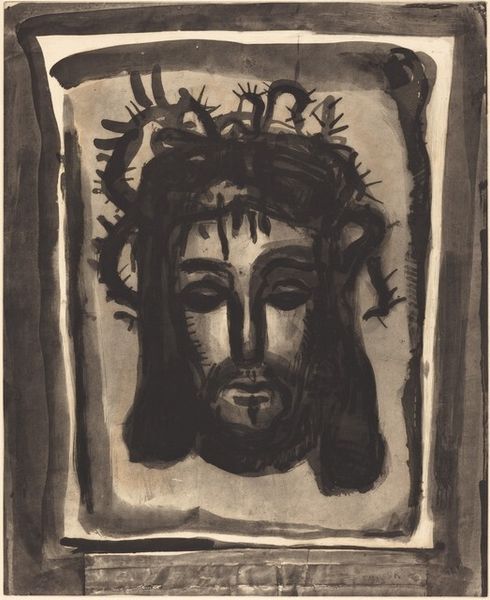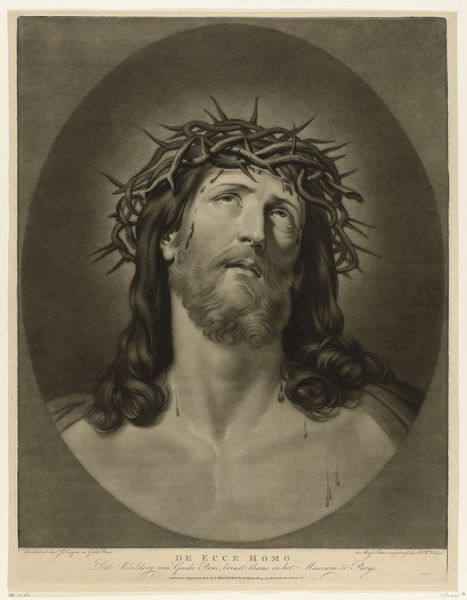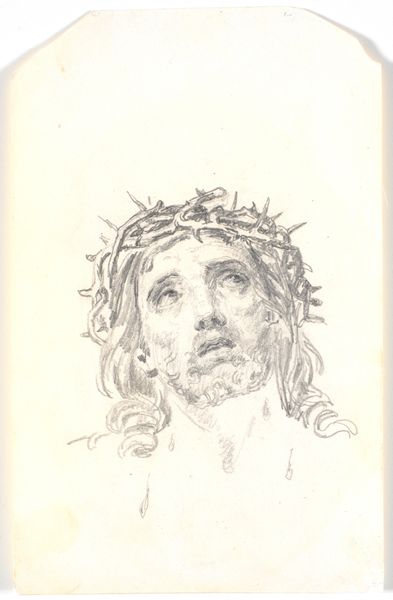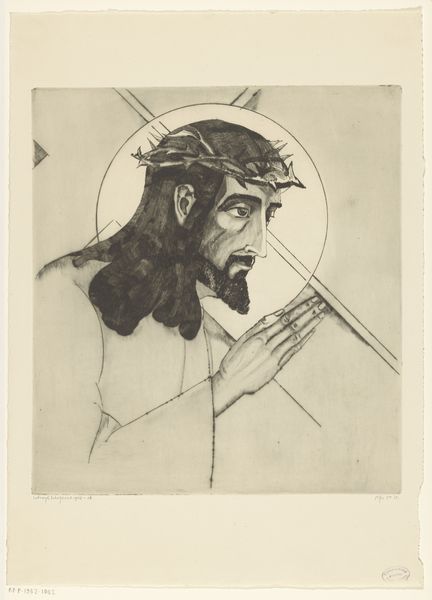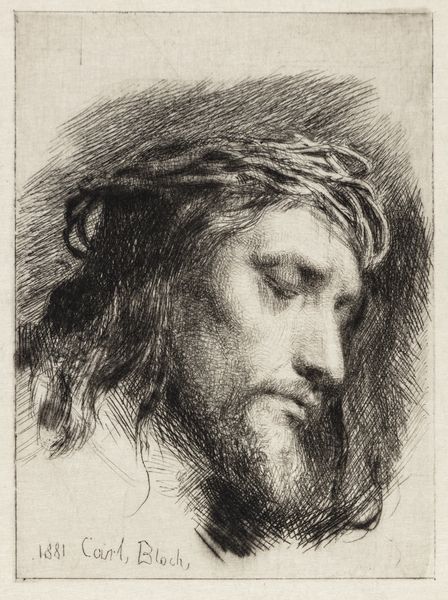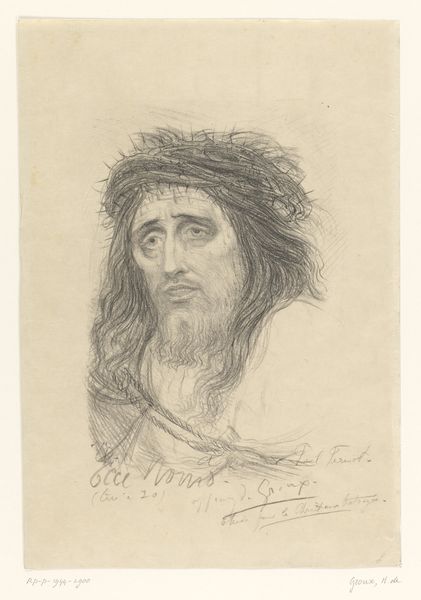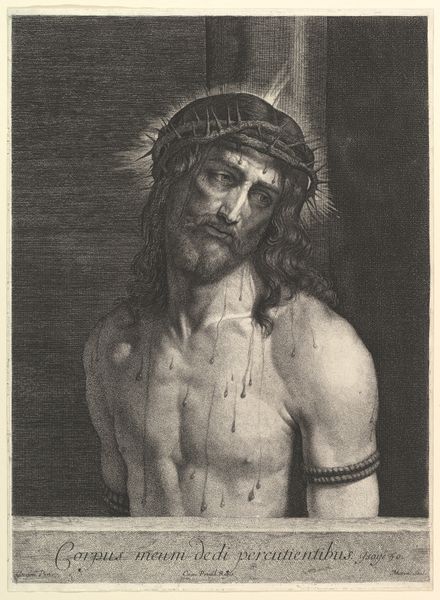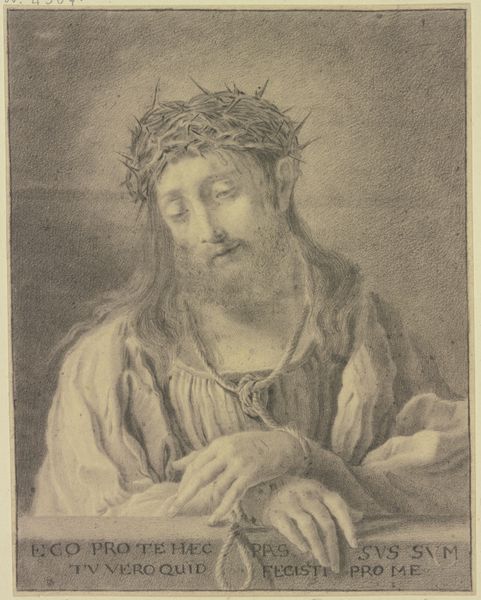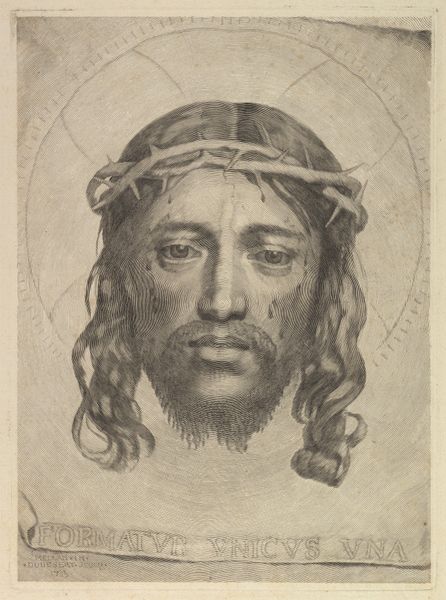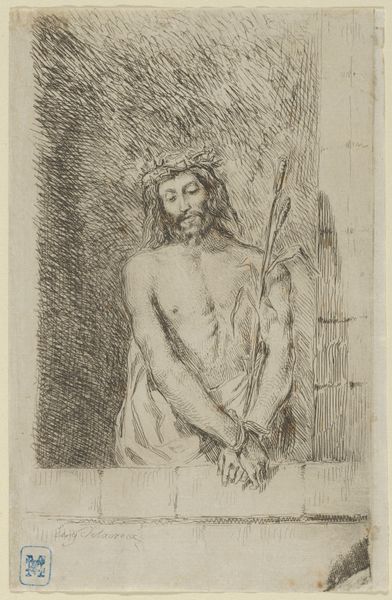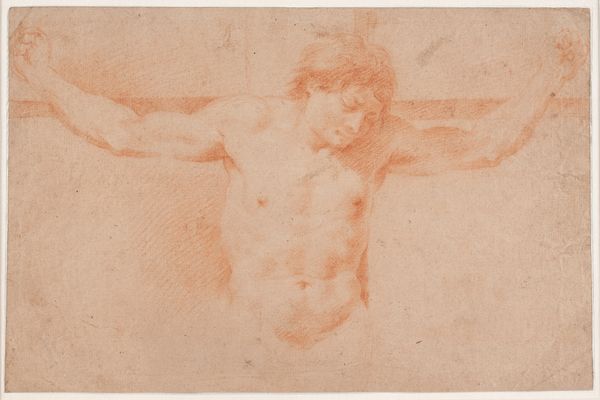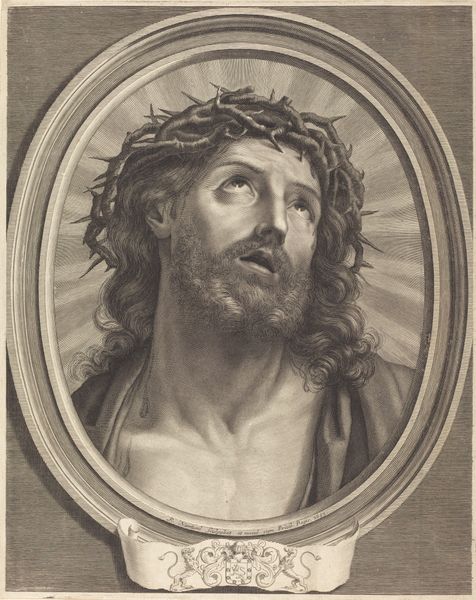
Dimensions: height 235 mm, width 170 mm
Copyright: Rijks Museum: Open Domain
Editor: Here we have Cl\u00e9ment Benoit's "Christus met doornenkroon," dating somewhere between 1876 and 1909. It's an etching, a print, and it's striking how raw the emotion feels through such delicate lines. What strikes you when you look at this? Curator: The choice of etching for such a subject is interesting. The repetitive, laborious process of etching contrasts sharply with the immediate suffering depicted. The materials – the copper plate, the acid, the paper – all play a role in distancing and, paradoxically, amplifying the scene. Consider the cultural context. Editor: How so? Curator: Prints made art accessible, turning religious iconography into a commodity for wider consumption. This particular piece evokes the traditions of the ancients while also fitting neatly in a style associated with Realism. This print engages in a fascinating commentary on both faith and how accessible art can be made. It removes it somewhat from the rarified context that religious iconography sometimes falls into. The question is, how does this tension affect our viewing? Editor: So, the very means of its creation, from the materials to the reproducibility, shifts the work’s meaning. It's not just about the image, but about how the image reaches its audience. Curator: Precisely. We consider not just who made it, but also how and why they made it using this medium and what was intended. We now understand its place as a representation of accessibility of religion. Editor: I never would have considered the materials having such a strong impact on how an artwork is received. Curator: That’s often the crux of art history – thinking about what’s underneath the surface.
Comments
No comments
Be the first to comment and join the conversation on the ultimate creative platform.
